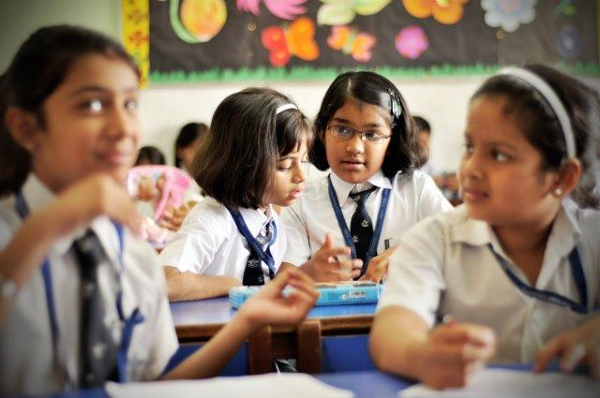MUMBAI: India now ranks second in the number of international schools it hosts, right behind China — an improvement of two ranks since 2012, when it was placed behind the UAE, Pakistan and China.
With middle-class parents in India largely opting for imported curricula, for reasons ranging from giving their children a shot at the Ivies and Oxbridge to social prestige, the count of international schools in the country has more than doubled in just seven years, with parents shelling out a combined $1.2 billion annually in tuition fees, data compiled for TOI by ISC Research shows.
While in 2012 India had 313 international schools, which enrolled 1.52 lakh children, in 2019, the numbers are 708 and 3.73 lakh, respectively. Also, local students now vastly outnumber expats, a demographic which these schools originally served. The nationality-wise break-up according to enrollment numbers is: 63.4% Indians, 5.2% Americans and 1.8% South Koreans, followed by students from scores of other countries, who are mainly the children of diplomatic officials and staff, and also from corporate families. “As in many other countries, parents in India have high aspirations for their children’s education. There is growing recognition of the advantages that private education, including international education, can offer. However, most families have not been able to realise their aspirations because of prohibitive tuition fees,” said ISC Schools director Richard Gaskell.
Little wonder then that several international schools have reworked their fees to attract more students. “The average annual fee of international schools in India is among the lowest in Asia, at $3,293,” said Gaskell. The corresponding average in China is $15,726, UAE $8,073, and Malaysia $6,395. The global average is almost thrice India’s, and stands at $9,242. International schools with annual tuition fees between $4,000 and $10,000 had 18.8% of India’s total international school enrolment in April 2017, and those with tuition fees above $10,000 had 6%.
A former International Baccalaureate (IB) representative for South Asia, Farzana Dohadwalla, said, “Parents are feeling they don’t want their child to be a scared, nervous one in a class of 50 or 60. Class sizes in international schools are small. These schools help their students become mini-leaders, entrepreneurs, team members, risk-takers. They are not just super words, they are real learner profiles.” The most prevalent foreign curricula in India are the Cambridge Secondary, Cambridge Primary and Cambridge Advanced programmes.
The Cambridge Secondary programme is delivered in 56.6% of all international schools in India, with IGCSE being the most prevalent foreign examination. The Podar Group of international schools, which has ten international curricula institutes, used to hold awareness seminars to explain how different these schools were from local ones.
Now, they have a waiting list of hundreds of students. Principal and director Vandana Lulla said, “Indian parents are the most serious kinds who value education and are looking for access to quality education at an affordable price. Aspirational parents who can afford an international curriculum, which is application-based, belong to the middle class, which is large in India.”
Source: TOI
Image Courtesy: BESA
You may also like
-
Trade Connect E-platform For Exports Is Single Window, Fast, Accessible And Transformational: Shri Piyush Goyal
-
Dot Simplifies Approval Processes For Telecom Licenses And Wireless Equipment
-
Coal Production and Supply Trends on Positive Trajectory
-
Union Minister To Release Booklets On Promotion Of Indigenous Species & Conservation Of States Fishes
-
2nd India-Japan Finance Dialogue held in Tokyo on 6th September, 2024
